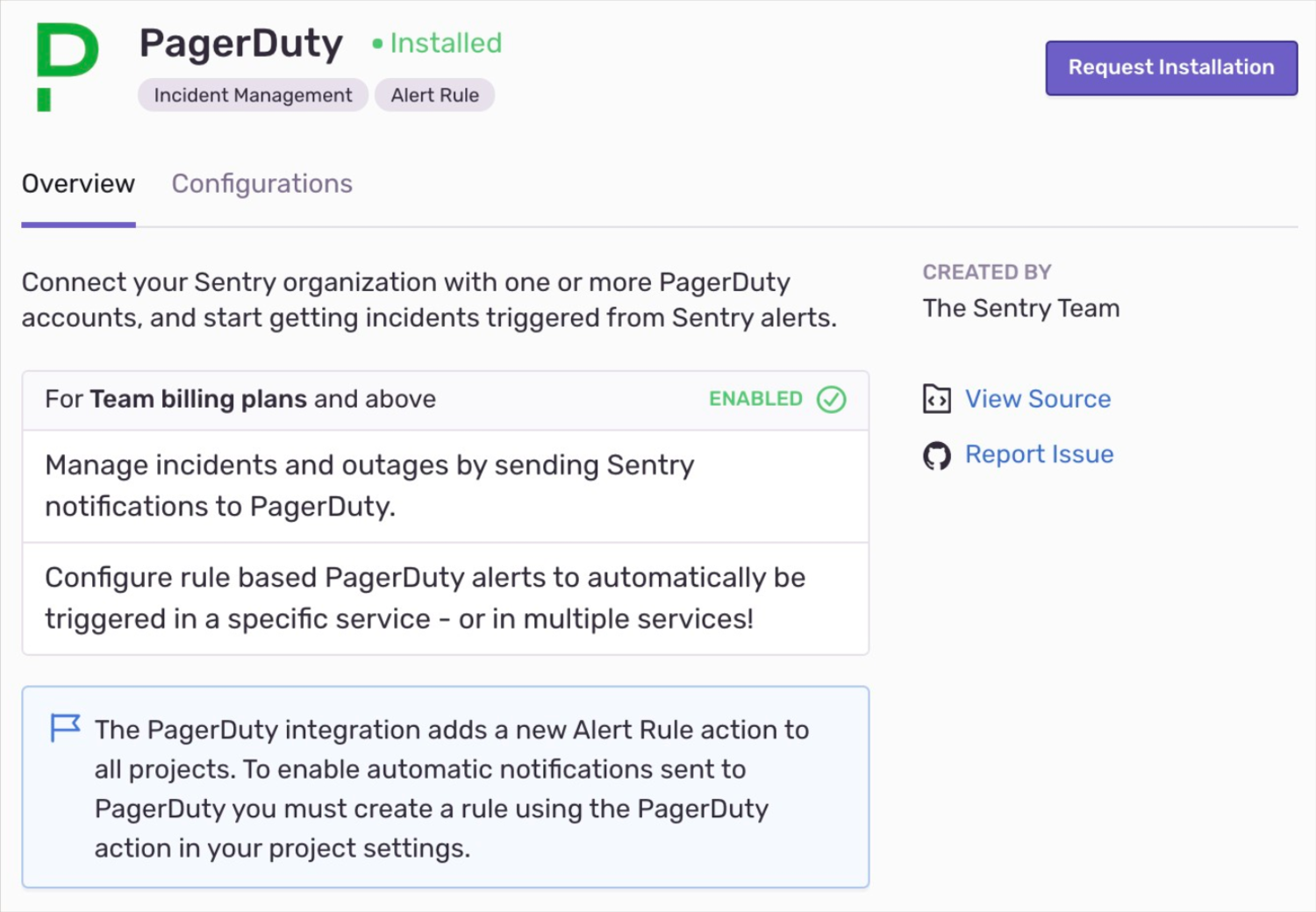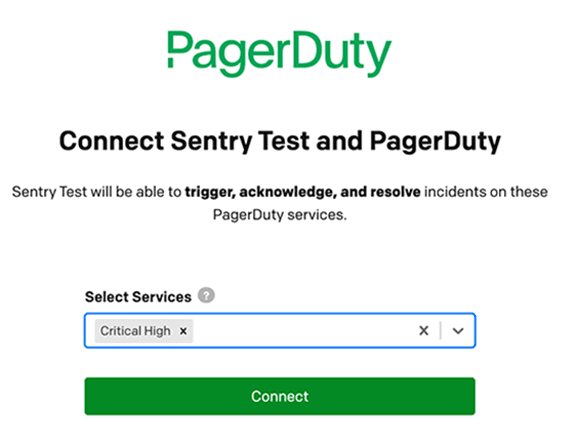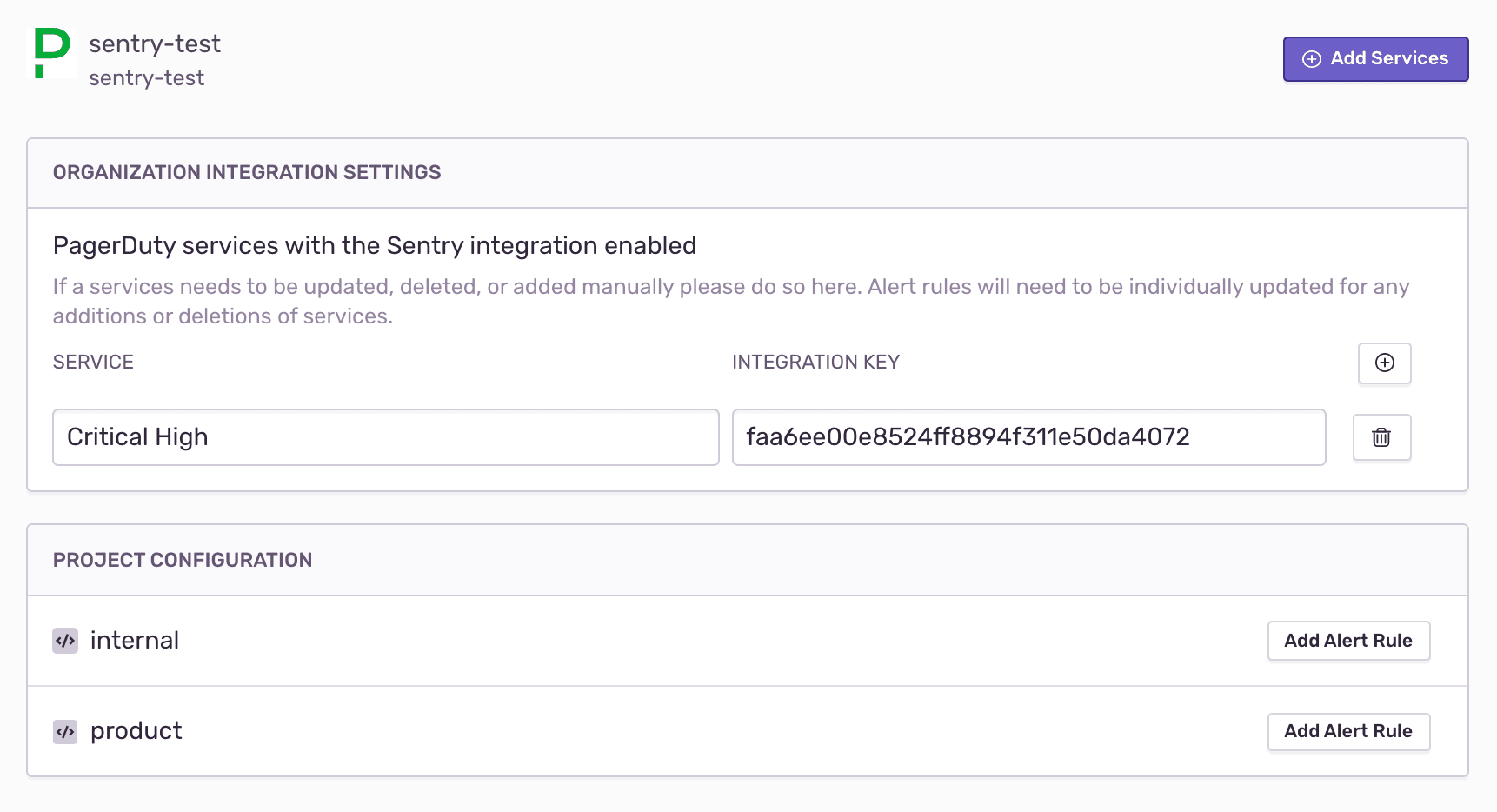PagerDuty
The PagerDuty integration allows you to connect your Sentry organization with one or more PagerDuty accounts, and start getting incidents triggered by Sentry alerts.
Sentry owner, manager, or admin permissions are required to install this integration.
Navigate to Settings > Integrations > PagerDuty
In the resulting modal, click "Add Installation".
You'll then be redirected to sign into PagerDuty and choose the account you'd like to connect to the current Sentry organization you are in.
After picking the account, you'll be prompted to add the PagerDuty services you want Sentry to send incidents to. Click "Connect" once you've added your services.
The PagerDuty integration should now be installed. You'll be able to see the services connected by going to the configure page for your installation.
You can now set up rules to use the new integration under Project Configuration in the configure section of your installation.
If you re-generate an integration key for one of your services in PagerDuty you can manually update that value in configuration page for your PagerDuty installation. Additionally, you can add services by clicking "Add Services" in the top right. This will take you to the same page, as shown in step 5.
Click "Add Alert Rule" in the integration configuration page or go to Alerts and click "Create Alert" to set up a new alert rule for the PagerDuty integration.
In issue alerts, select "Send a PagerDuty notification" in the actions dropdown and then select your account and service. You can also select a custom severity for alert, or select "default" to use the default severity level that Sentry provides for issue types ("critical" for fatal, "error" for error, "warning" for warning, and "info" for debug and info issues).
In metric alerts, select the PagerDuty option in the dropdown that corresponds to your account and the select your service. You can also select a custom severity for the alert, or leave it blank to use the default severity level that Sentry provides for incident statuses ("critical" for critical status and "warning" for warning status).
If a PagerDuty incident is created from the critical trigger of a metric alert and no warning threshold has been set, it will resolve itself when the Sentry metric alert is resolved. Metric alerts that have set warning thresholds may need to be manually resolved as PagerDuty incidents.
Once you configure the global PagerDuty integration and Alert Rules, you can disable the old PagerDuty integration. You’ll need to go to each project that has it enabled and disable it. We recommend disabling the legacy integration after setting up the global integration.
Our documentation is open source and available on GitHub. Your contributions are welcome, whether fixing a typo (drat!) or suggesting an update ("yeah, this would be better").






